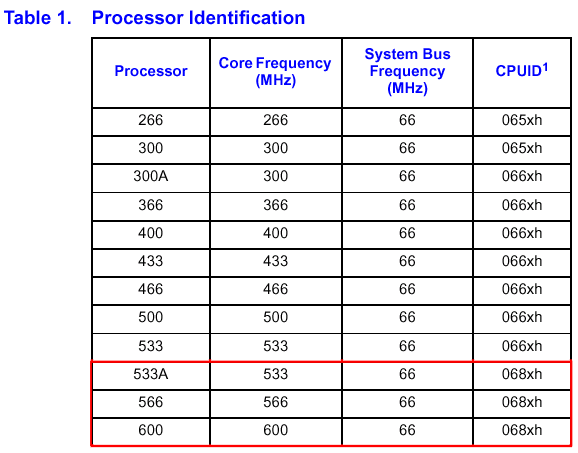
A 533A Exists
Intel played down the release of the new Celeron processors as much as they could. The processors were announced on a Wednesday, not a Monday, which is the case for all major processor releases. Intel didn’t want the Celeron to turn into anything more than it was originally intended to be – a low end CPU – , which is one of the reasons you heard very little about overclocking on the day of its release.
Contrary to what the press releases said and what most of us believed, the CPUs released on March 29, 2000 included another frequency alongside the 566 and 600MHz parts that received all of the attention.
Intel also released what is known as a transitional part, designed to bridge the gap between the previous generation of processors and the current generation. For example, the original cacheless Celeron was available in 266MHz and 300MHz frequencies while the next generation Celeron with 128KB of on-die L2 cache debuted at 300MHz and 333MHz, the 300MHz part being the transitional part.
In this case, the transitional part is a little known 533MHz processor known as the Celeron 533A (much like the latter Celeron 300 was known as the 300A). The Celeron 533A is an interesting part to watch because it has a 8.0x clock multiplier which, when used with a 100MHz FSB frequency would result in an 800MHz overclock, something that is more reasonable than what a Celeron 600 with its 9.0x multiplier would result in (100MHz x 9.0 = 900MHz) since 800MHz is closer to the frequency of currently available Pentium III processors.
It has been said that beauty is in the eye of the beholder, and to most of us, the 533A is a beautiful part as it would take the place of the Celeron 300A whose 50% overclock to 450MHz is mimicked by the potential of a 50% overclock of the 533A to 800MHz.
While it’s not prominent on Intel’s site, here we have a table from Intel’s Celeron datasheet indicating the presence of a 533A as a part of the growing Celeron family.











0 Comments
View All Comments